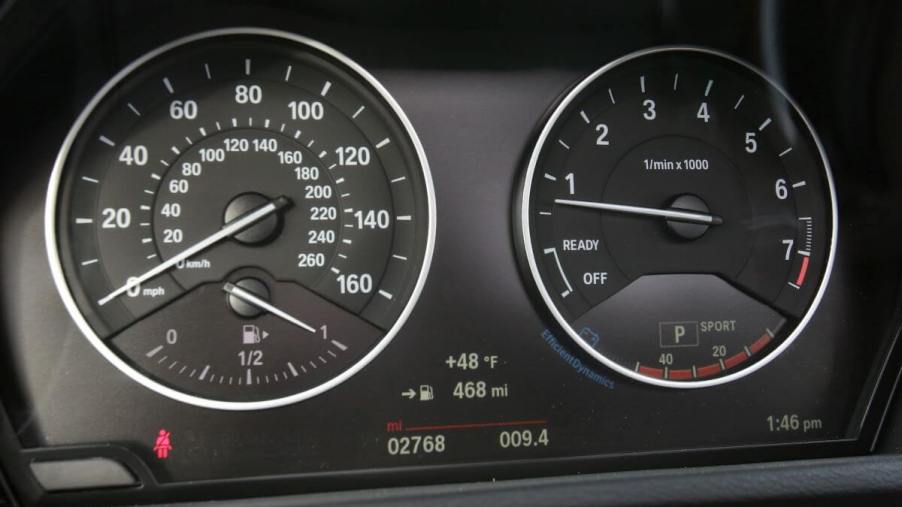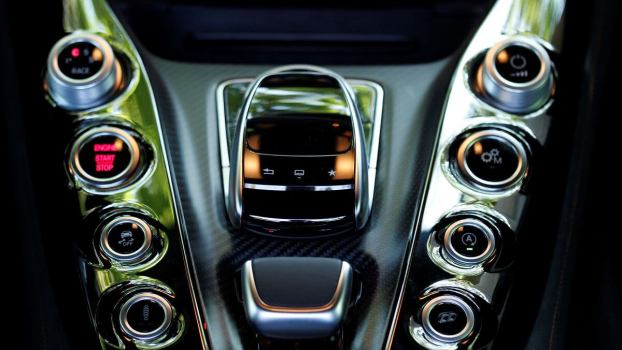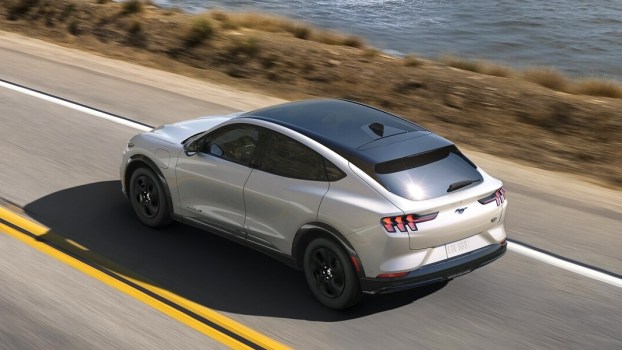
What’s the Difference Between the Speedometer and Tachometer in a Car?
Your car’s instrument panel contains warning lights, gauges, and meters to communicate critical information about your vehicle’s systems. Some indicate the need for vehicle maintenance, and others relay car safety information you should pay attention to. We use other gauges like the speedometer on every drive, but what about the tachometer, with its very similar appearance? Here’s a look at the differences between a car’s speedometer and tachometer.
Your car’s speedometer performs an important function, or two
How a Car Works says the speedometer is the only legally required gauge on a car’s dashboard. Simply put, speedometers let drivers know how fast they are going. Without that critical information, our highways would be more dangerous than they already are.
The other important function of the speedometer is keeping track of your vehicle’s mileage. The odometer starts out reading zero as the car leaves the assembly line. It’s essential that it maintains an accurate record of miles driven for vehicle maintenance intervals and as an indicator of usage for future buyers. We also used it for navigation before GPS by noting the mileage when printed directions told us the distance to our next turn.
What is a tachometer, and what does it do?
KUS, a manufacturer of tachometers for vehicle and marine applications, says tachometers help drivers maintain optimal engine RPMs. Essentially, a tachometer measures the engine’s revolutions per minute (RPM) and relays that to the driver via a digital or analog display on the dashboard. Often, the analog display looks similar to the speedometer as both feature a ring of numbers around the outer edge and a needle that sweeps past them as the vehicle changes speed.
The tachometer often reminds drivers when it’s time to shift gears in vehicles with manual shift transmissions or manually shiftable automatic transmissions. The “tach” also has a redline, indicating the manufacturer’s maximum recommended engine RPM. Drivers should resist the temptation to consistently approach or exceed the redline as engine damage could occur.
What are some other standard dashboard gauges?
J.D. Power says that in addition to the car’s speedometer, odometer, and tachometer, other dashboard gauges include the following:
Fuel gauge
A fuel gauge shows how much fuel is in the fuel tank. It typically indicates fuel levels ranging from empty, one-quarter, half-full, three-quarters, and full. The gauge often has designators such as E for empty and F for full at either end. Modern car displays often show “miles to empty” or “range” that some drivers rely on more than the fuel gauge.
Temperature gauge
This shows the engine coolant temperature inside the engine. Some temperature gauges show actual temperature, while others have a range from low to high with a normal range indicated. This useful display can warn drivers of an engine overheating problem before it becomes critical. If your car doesn’t have a temperature gauge, a warning light comes on when the engine temperature rises above the normal range.
Turn indicators
Usually located to the left and right of the instrument cluster, these indicators flash with the turn signals. They will let you know if you leave your blinker on after making a lane change. They also blink faster if you have a faulty external turn signal bulb.
Gear display
Automatic transmission cars have a gear display included on the dashboard. The gear display lets you know if your vehicle is in Park, Neutral, or Drive or if you’ve put it into a lower gear. Some manual shift cars also have this feature showing which gear you are in.
Additionally, there are various warning lights, such as check engine, emergency brake, oil pressure, coolant level, and battery lights.
For more information about your car’s dashboard, it’s best to consult your vehicle owner’s manual. There, you’ll find an explanation for all the symbols and lights you may see whenever you start your car or if it’s trying to tell you something important.





